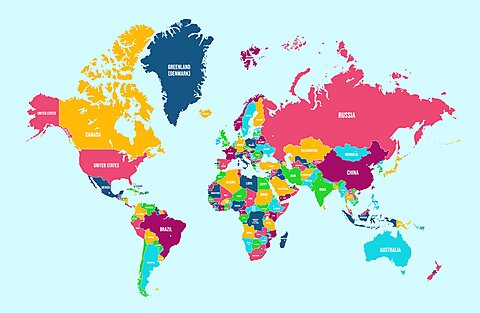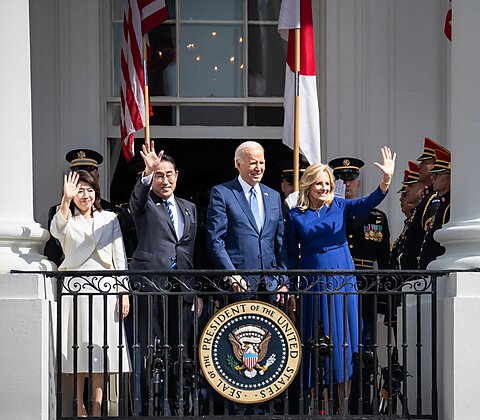House and Senate members can be notoriously thin‐skinned when questioned about their policy and legislative choices. That was evident on April 14, when Sean Vitka, policy director for the left‐leaning advocacy group Demand Progress, took to X (formerly known as Twitter) to ask House Permanent Select Committee on Intelligence (HPSCI) ranking member Jim Himes (D‑CA) a question.
Vitka asked whether Himes understood that an amendment he co‐authored and which was included in the just‐House passed Foreign Intelligence Surveillance Act (FISA) reauthorization bill granted federal electronic spies “Stasi‐like” powers.
The reference, of course, is to the infamous East German secret police, known as the Stasi.
Vitka said he intended to keep asking Himes about it until he got an answer, to which Himes shot back:
“You do that. But life is really too short to engage with people who need to use bombastic absurdities like ‘Stasi‐like.’ Yes, I know exactly what is in there. Some of it is classified. And none of it is remotely ‘Stasi‐like.’ Sell your nonsense elsewhere.”
Vitka wasn’t trolling Himes. The amendment in question is radical in its scope and implications. And it wasn’t just Vitka who was raising the alarm. Over at the ZwillGenBlog on April 9, Marc Zwillinger and his law partners Steve Lane and Jacob Sommer provided an extensive and devastating legal analysis of the privacy and constitutional rights implications of Himes’s amendment (co‐authored by HPSCI Chairman Mike Turner (R‑OH).
Zwillinger holds a Top Secret security clearance and has argued cases before the Foreign Intelligence Surveillance Court of Review (FISCR), one of the few private sector lawyers known to have done so. Lane is a former Justice Department attorney and legal advisor to the Foreign Intelligence Surveillance Court (FISC). Sommer is a privacy law expert and has also argued cases before the FISC. When it comes to surveillance law and constitutional rights, these three are legal heavy hitters.
And what did Zwillinger, Lane, and Sommer conclude about the Himes‐Turner amendment?
After noting that the amendment excluded public accommodations, dwellings, restaurants, and community facilities, the trio said,
The new amendment would — notwithstanding these exclusions — still permit the government to compel the assistance of a wide range of additional entities and persons in conducting surveillance under FISA 702. The breadth of the new definition is obvious from the fact that the drafters felt compelled to exclude such ordinary places such as senior centers, hotels, and coffee shops. But for these specific exceptions, the scope of the new definition would cover them—and scores of businesses that did not receive a specific exemption remain within its purview. (emphasis ZwillGenBlog)
Examples cited by the three include “owners and operators of facilities that house equipment used to store or carry data, such as data centers and buildings owned by commercial landlords” and “other persons with access to such facilities and equipment, including delivery personnel, cleaning contractors, and utility providers.”
If a building partly owned by former President Donald Trump also contained a data storage and/or routing center, could that data storage/routing center become a legitimate surveillance target if the Himes‐Turner amendment becomes law? If foreign‐to‐US or US‐to‐foreign communications transit the facility, yes.
If the communications of former President Trump, his employees, and perhaps even his attorneys passed through that data storage/routing center, could they also be swept up as “incidental” communications when the actual targets were foreigners? Yes.
This is a hypothetical scenario involving former President Trump, but the same data center scenario appears to be the exact real‐world episode that prompted Turner and Himes to offer the amendment, according to recent New York Times reporting. Thus, if the Turner‐Himes amendment were to become law, its digital reach and lack of any kind of FISC review could put at surveillance risk the data of literally millions of Americans—including any current political office holder or candidate, as well as their staff, constituents, or donors.
During House floor debate on their amendment, Himes and Turner went to great lengths to claim that their legislative proposal was merely a “technical correction” to existing law. It’s definitely technical, but it’s not a correction. Instead, it’s a potentially radical expansion of FISA’s reach into the communications of Americans. And Himes’s fellow Democrat, Senator Ron Wyden of Oregon, definitely thinks the Himes‐Turner amendment does exactly what Zwillinger, Lane, Sommer, Vitka, and I believe it does.
“It allows the government to force any American who installs, maintains, or repairs anything that transmits or stores communications to spy on the government’s behalf,” Wyden said in a press release. “That means anyone with access to a server, a wire, a cable box, a wifi router, or a phone. It would be secret: the Americans receiving the government directives would be bound to silence, and there would be no court oversight,” Wyden said, vowing to do everything in his power to stop the bill.
If you thought the fight over federal government spying on Americans was drawing to a close, buckle up…there’s much more to come before April ends.
Former CIA analyst and ex‐House senior policy advisor Patrick Eddington is a senior fellow at the Cato Institute.









